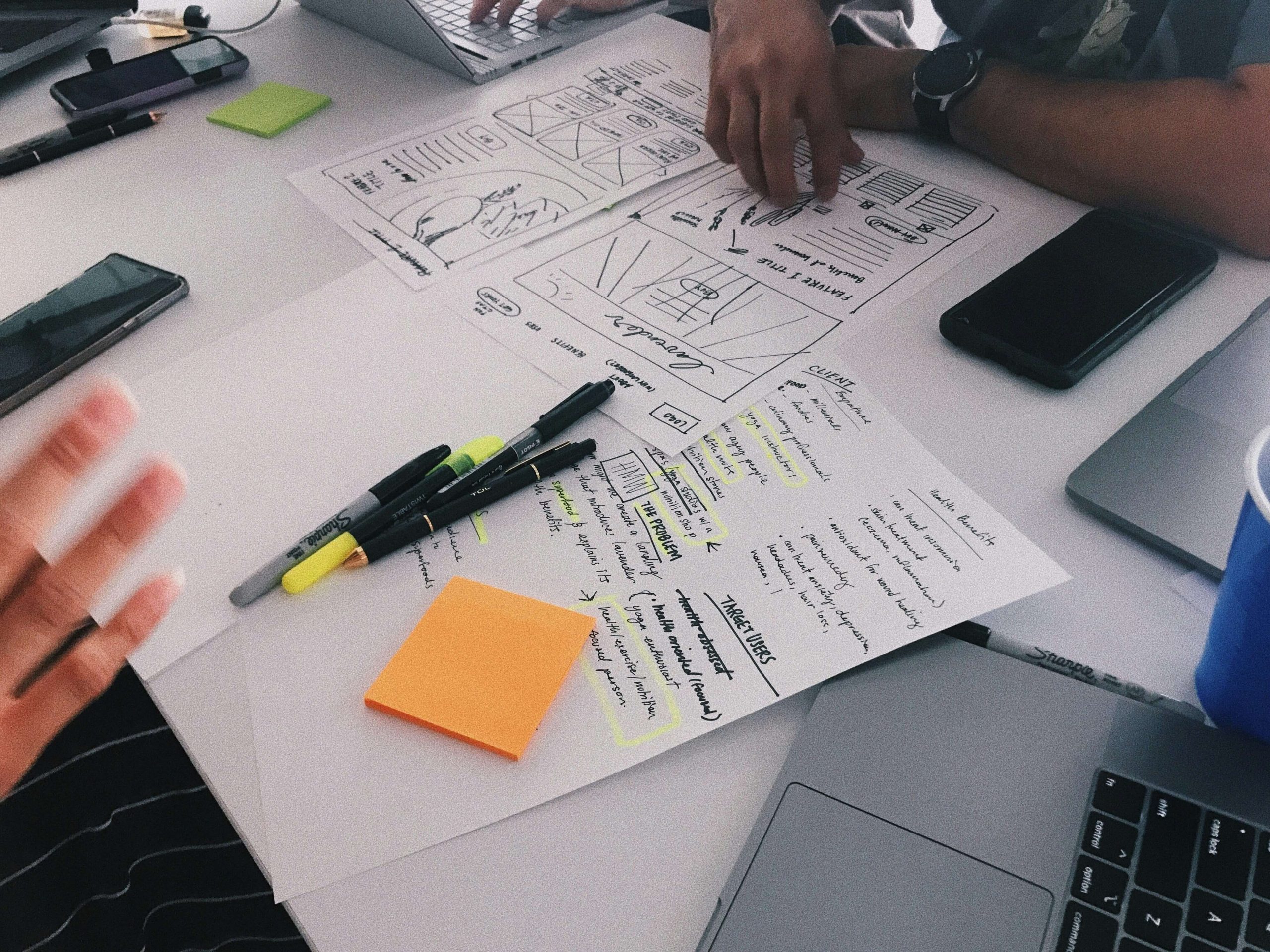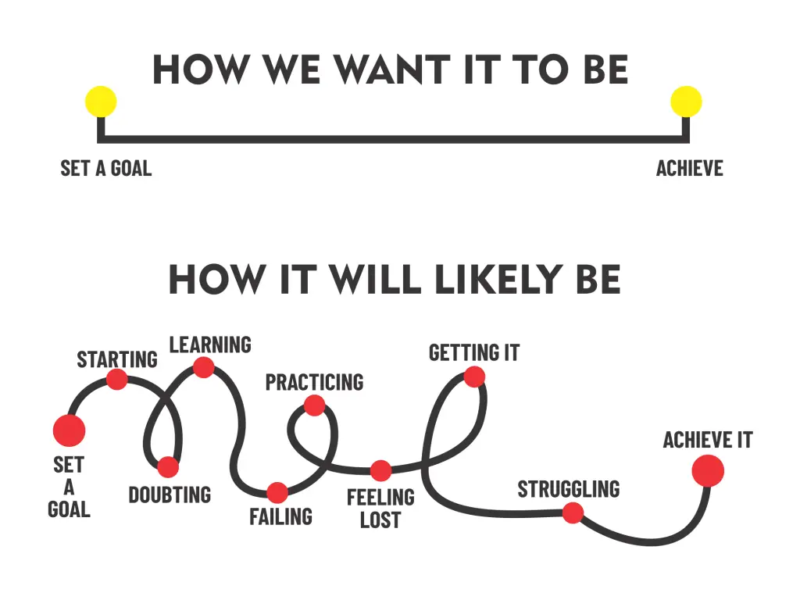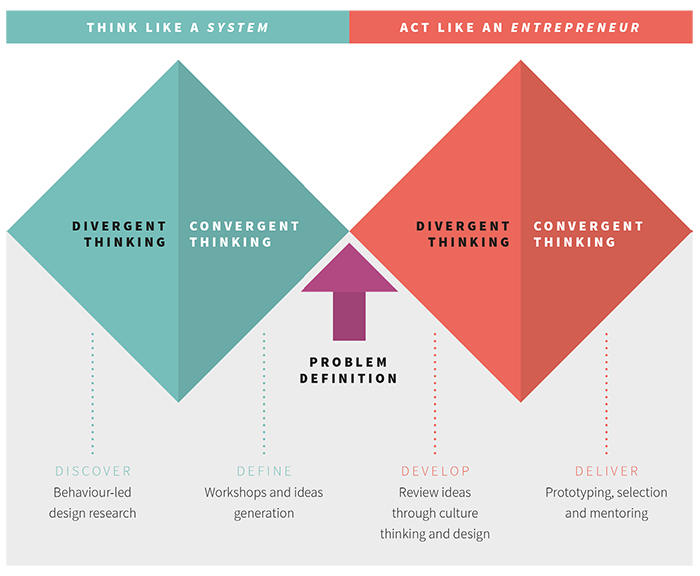Bridging Complexity and Empathy to Solve Real Problems
Why People Are the Heart of Systems
Complex systems—whether healthcare, education, or corporate ecosystems—are driven by human interactions, needs, and behaviors.
Yet, traditional problem-solving often reduces these systems to flowcharts and metrics, sidelining the lived experiences of stakeholders.
Human-Centered Systems Thinking (HCST) bridges this gap by merging the analytical rigor of systems thinking with the empathy-driven creativity of human-centered design (HCD).
In this post, we’ll explore how to tackle systemic challenges by keeping people at the core while mapping, analyzing, and redesigning systems. You’ll learn actionable frameworks, tools, and skills to identify root causes, reframe problems, and prototype solutions that create lasting impact.
Part 1: Mapping Complex Systems and Root Causes
Why Systems Mapping Matters
Systems maps reveal hidden connections, feedback loops, and leverage points. Without them, teams risk solving symptoms instead of root causes. For example, a hospital struggling with patient wait times might blame staff efficiency, while the real issue lies in appointment scheduling algorithms or insurance verification processes.
How-To Techniques:
- Causal Loop Diagrams (CLDs):
Visualize reinforcing and balancing feedback loops. For instance, a CLD could show how employee burnout (a reinforcing loop) leads to decreased productivity, further increasing workload.- Tool: Use Kumu for interactive mapping.
- Framework: Systems Thinking Society’s guide to CLDs.
- Stakeholder Mapping:
Identify key actors, their needs, and pain points. A healthcare system map might include patients, nurses, insurers, and policymakers, each with conflicting priorities. - Iceberg Model:
Dive from visible events (e.g., high employee turnover) to underlying patterns, structures, and mental models (e.g., toxic leadership culture).- Reference: The Iceberg Model by The Systems Thinker.
Case Study:
Toyota’s “Five Whys” technique famously traces problems to their root cause. When a factory machine stopped, asking “why” five times revealed a deeper issue in supplier quality control—not just a broken part.
Part 2: Establishing a Shared View and Reframing Problems
Collaborative Problem-Solving
Complex systems require diverse perspectives. A shared view aligns teams and prevents siloed thinking.
How-To Techniques:
- Participatory Workshops:
Use facilitated sessions to co-create system maps with stakeholders. For example, UNICEF’s Human-Centered Design for Social Innovation workshops engage communities in solving local challenges.- Tool: Liberating Structures for inclusive ideation.
- Reframing with Empathy:
Shift from “How do we reduce costs?” to “How might we improve patient dignity in low-resource settings?”- Framework: IDEO’s Design Thinking for Educators emphasizes empathy in reframing.
- Multi-Perspective Analysis:
Apply the Cynefin Framework to categorize problems as simple, complicated, complex, or chaotic. Complex problems (e.g., climate change) require probing and experimentation.
Example:
The nonprofit RTS reduced food waste by reframing the problem from “managing waste” to “designing a circular economy for surplus food,” engaging retailers, logistics partners, and food banks.
Part 3: Finding the Right Problems and Solutions
Prioritizing Leverage Points
Donella Meadows’ Leverage Points: Places to Intervene in a System ranks interventions by impact. The most powerful? Changing paradigms (e.g., shifting from linear to circular economies).
How-To Techniques:
- Impact-Effort Matrix:
Plot solutions based on feasibility and impact. High-impact, low-effort “quick wins” build momentum.- Tool: Template by Asana.
- Theory of Change (ToC):
Define long-term goals and map backward to required interventions. The Aspen Institute’s guide offers a step-by-step approach. - Prototyping Solutions:
Test low-fidelity prototypes to gather feedback. For example, a school system might pilot a new grading system in one classroom before scaling.- Framework: Stanford d.school’s Design Thinking Bootleg.
Case Study:
Amsterdam’s Doughnut Economics model reimagines urban systems by balancing human needs with ecological limits, influencing global policy.
Part 4: Iterative Testing and Learning
Build-Measure-Learn Cycles
Adopt an agile mindset to refine solutions. For instance, Spotify’s squad model uses rapid experimentation to improve user experience.
How-To Techniques:
- PDSA (Plan-Do-Study-Act):
A iterative method for continuous improvement. - Feedback Loops:
Embed feedback mechanisms like surveys or A/B testing. Airbnb’s iterative design process relies on host and guest input. - Learning Journals:
Document insights from experiments. MIT’s Learning Edge emphasizes reflection in systemic change.
Key Skills for HCST Practitioners
- Systems Thinking:
Analyze interconnections and anticipate unintended consequences.- Course: MIT’s Systems Thinking In Practice.
- Collaboration:
Bridge disciplines and power dynamics. Tools like Slack or Mural foster virtual teamwork. - Decision-Making:
Balance data and intuition. The OODA Loop (Observe-Orient-Decide-Act) aids rapid decisions in uncertainty.
Recommended Tools and Frameworks
- Mapping: Kumu, Miro, Lucidchart.
- Ideation: IDEO’s Design Kit, Journey Mapping.
- Analysis: SWOT, Systems Dynamics Software.
Conclusion: Designing Systems That Serve Humanity
Human-Centered Systems Thinking isn’t a checklist—it’s a mindset. By grounding systemic analysis in empathy and experimentation, we can redesign education, healthcare, and organizations to prioritize human dignity and resilience.
Start small: map a personal challenge, host a reframing workshop, or prototype a solution. The systems of tomorrow depend on the choices we make today.
Further Reading:


